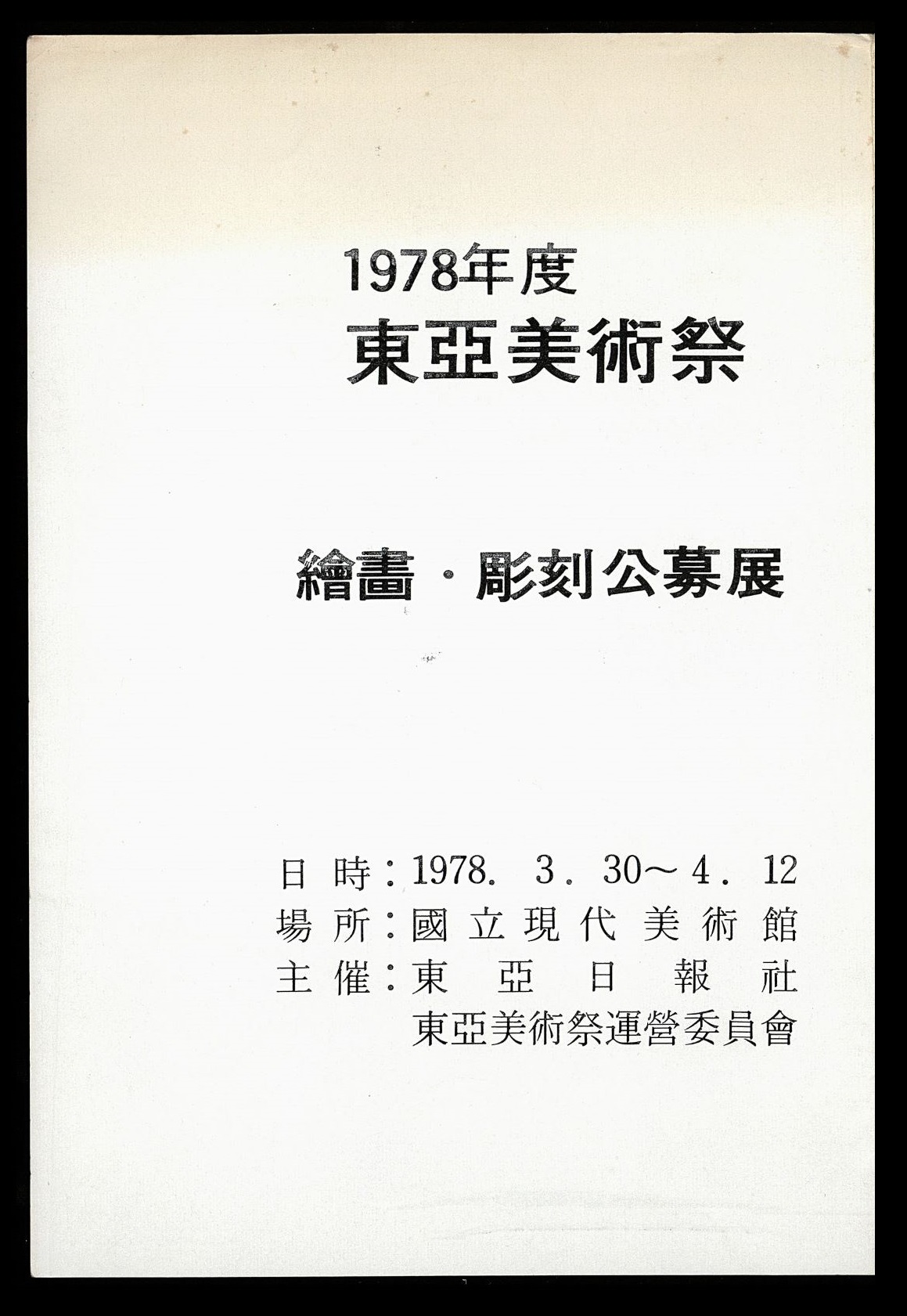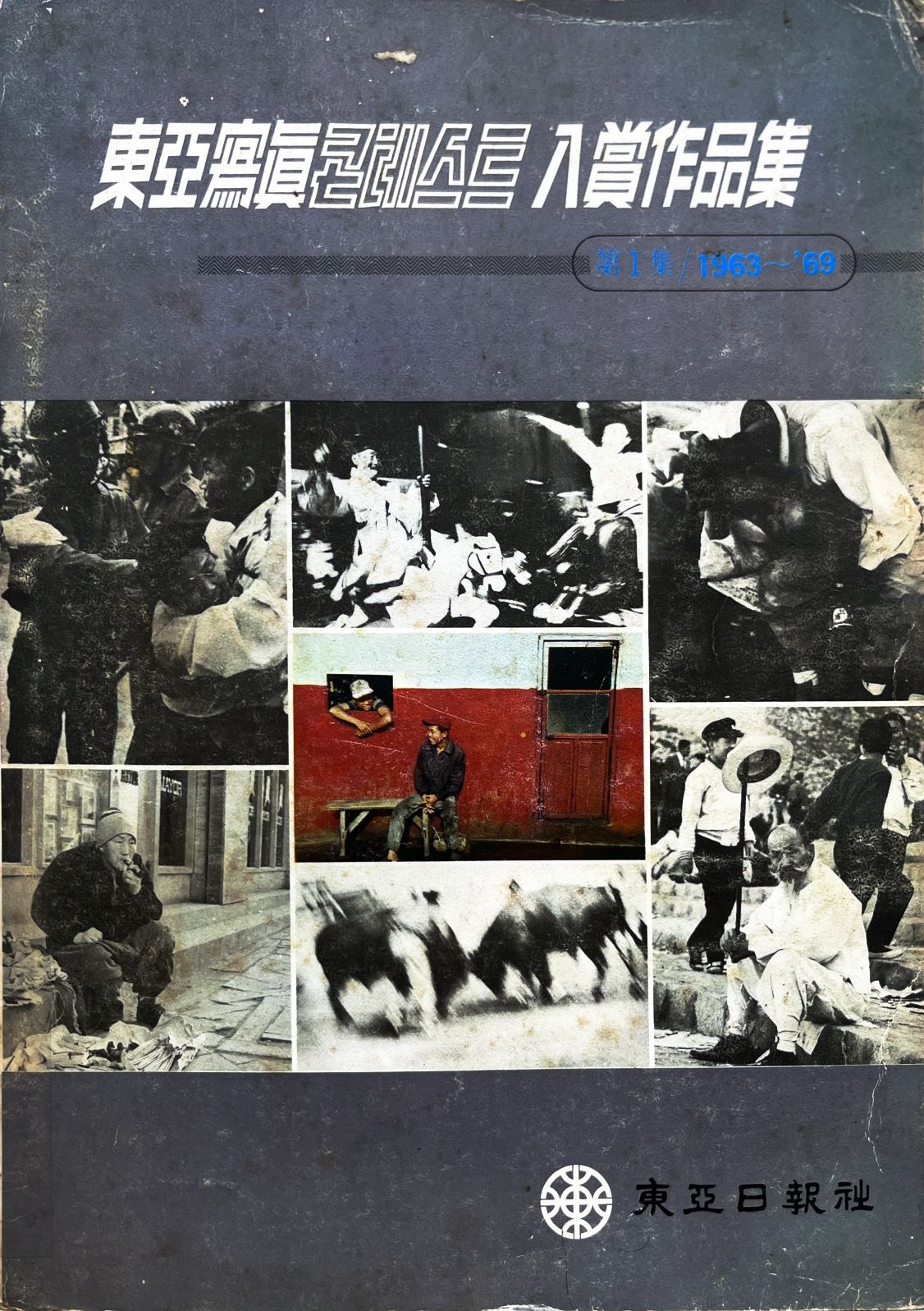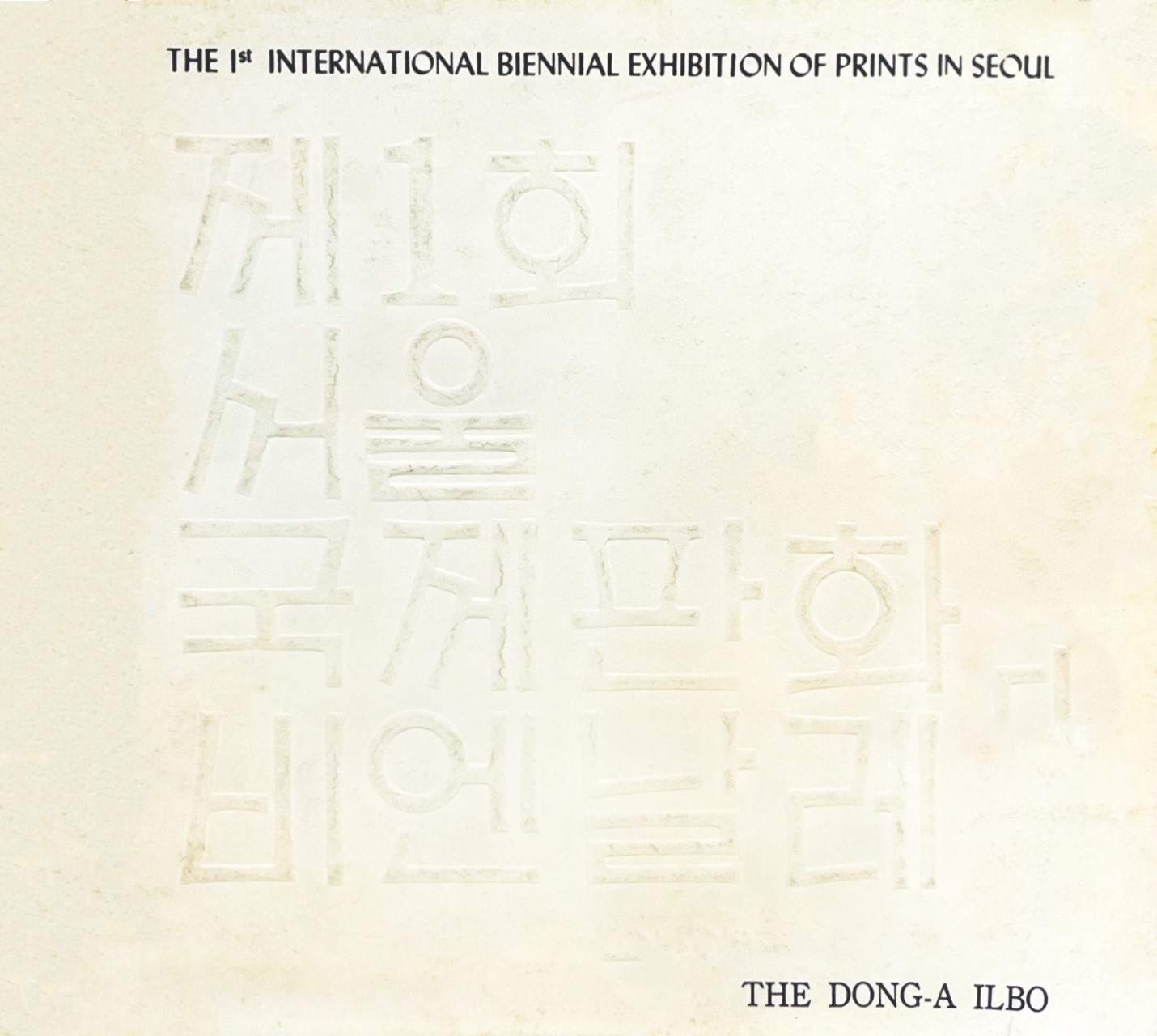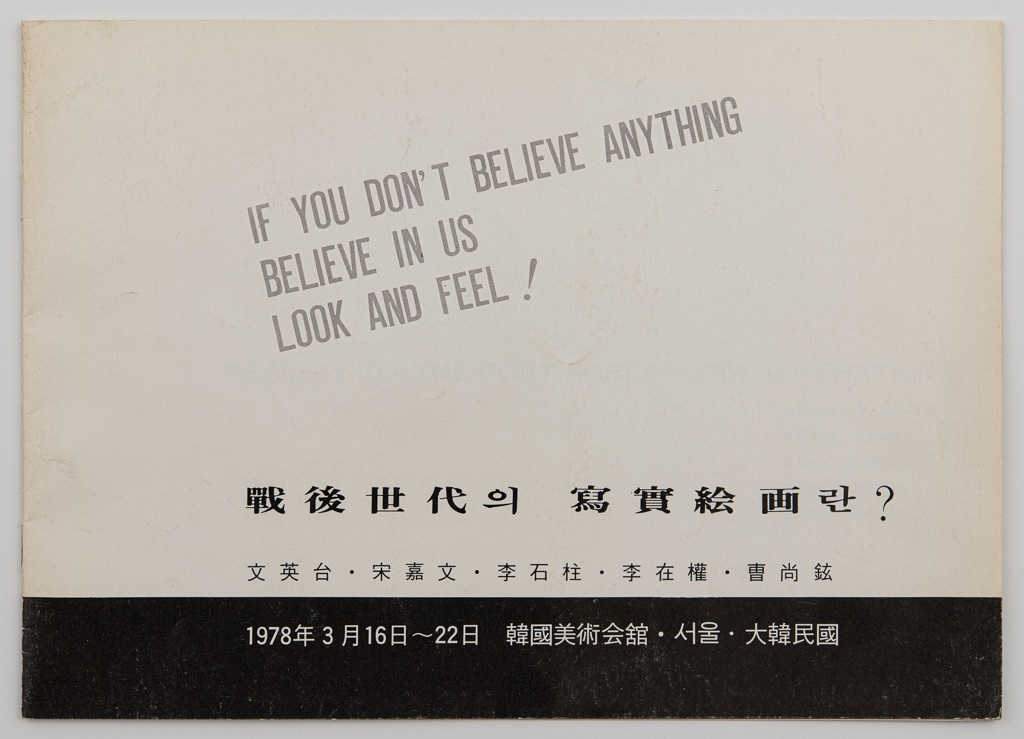
1978 Dong-A Art Festival Paingting, Sculpture Contest, Leaflet, 1978, MMCA Art Research Center Collection
Dong-A Art Festival
* Source: Multilingual Glossary of Korean Art. Korea Arts Management Service
Related
-

Dong-A Photo Contest
Dong-A Photo Contest hosted by the Dong-A Ilbo newspaper company was founded in 1963 by Lee Myeongdong, a photojournalist at Dong-A Ilbo, in response to the delay in establishing the photography section at the National Art Exhibition (Gukjeon). While the photography section at National Art Exhibition, which was established in the following year, was more like a state-led exhibition, Dong-A Photo Contest was more of a private exhibition. By the 1970s, both of them had evolved into two of the leading photography competitions. Although Dong-A Photo Contest tended to favor realistically inclined photographs as its prize-winning works, it also embraced a variety of experimental forms, including narrative photography. As it was absorbed into the Dong-A Art Festival in 1978, it was held every other year from 1979 through 1989. Later, it was separated from the Dong-A Art Festival and held under the title of Dong-A Photo Contest twenty-seven times from 1991 through 1996. From 1963 through 1977, it was held at the Press Center of Korea Gallery, and in 1979 and 1981 it was presented at the National Museum of Modern Art, Korea (now MMCA). Among the notable prize winners are Kim Theresa (1968 and 1969), Yook Myoungshim (1974), and Cha Yongbu (1976).
-

JoongAng Fine Arts Prize
JoongAng Fine Arts Prize was launched by the JoongAng Ilbo newspaper company in 1978. Along with the Dong-A Art Festival initiated by the Dong-A Ilbo newspaper company and the Dong-A Broadcasting System in the same year, it was one of the two leading private exhibitions. It began with a goal to overcome the irregularities of the National Art Exhibition (Daehanminguk misul jeollamhoe or Gukjeon), discover new talents, and encourage diverse creations. The JoongAng Fine Arts Prize was run mainly in the form of competitions and invitational exhibitions, but the invitational exhibitions ran only for four rounds and was discontinued. As the Gukjeon was abolished in 1981, the JoongAng Fine Arts Prize came to be firmly established as a gateway for young artists alongside the Dong-A Art Festival. Under the influence of the Gwangju Biennale that started in 1995, it was renamed the JoongAng Biennale. However, two years later in 1997, it reverted to the JoongAng Fine Arts Prize. As channels through which artists debuted became diversified in the 1990s onwards, its status as a gateway for young artists gradually weakened. Starting in 2005, it attempted to make changes by providing selected artists with production expenses and a space for exhibiting their completed works. Nevertheless, it ended up being discontinued with the thirty-eighth edition held in 2016 as the last exhibition.
-

Seoul International Print Biennale
The Seoul International Print Biennale was an international print exhibition hosted by Dong-A Ilbo newspaper company from 1970 through 1996. Since it started as an event to celebrate the fiftieth anniversary of the founding of Dong-A Ilbo, it was called the Dong-A International Print Biennale until the third edition. After being held twice in the 1970s, in 1970 and 1972, respectively, the biennale was suspended for ten years due to the circumstances of Dong-A Ilbo. Resumed in 1981 with the third edition followed by the fourth edition in 1983, the biennale was held every two years from 1986 to 1996. From the first to the third editions, only four winners were selected under the name of Dong-A Grand Prize instead of being awarded according to a conventional rating system of grand, gold, silver, and bronze prizes. Among Korean artists, the Dong-A Grand Prize winners were Kim Sangyu (first), Song Burnsoo (second), Han Unsung (third), Yoon Miran (fourth), Kim Taeho (fifth), Kang Airan (sixth), Youn Myeungro (seventh), Ji Seokcheol (eighth), and Lee Inhyeon (tenth). From the fourth edition, the awarding system was changed back to a rating system with the addition of an excellence award. The commissioner system was introduced in the seventh edition. In the thirty-year history of the Seoul International Print Biennale, the third edition stands out. At the third edition, Still Life A and Still Life B by the invited artist Kim Kulim were rejected because they did not fit the nature of the biennale, which became a major issue. Kim’s works were three-dimensional creations made using printmaking techniques, which were far from the conventional concept of printmaking. As a result, the range of prints that could be exhibited was expanded from the fourth edition. As the first international exhibition solely hosted by South Korea, the Seoul International Print Biennale holds significance in contemporary Korean art history. It also helped to proactively change facets of international exchanges. Moreover, it spurred principal shifts in the development of contemporary Korean prints by providing an opportunity for Korean artists to explore overseas art trends at home and contributing to the spread of awareness of prints as a genre of art. Since the holding of the biennale, the number of artists attempting printmaking in Korea increased and the quality of printmaking grew significantly. This is why the Seoul International Print Biennale is viewed to have been a catalyst in the development of contemporary Korean prints.
Find More
-

What is the Realistic Painting of the Postwar Generation?
What Is the Realistic Painting of the Postwar Generation? is an exhibition on hyper-realist paintings held from March 16 through 22, 1978 at Art Center. Five young artists born between 1950 and 1954, Moon Youngtae, Song Gamun, Lee Sukju, Rhee Jaikwon, and Jo Sang-hyeon, participated in the exhibition, which was curated by Jo Sang-hyeon. Hyper-realist paintings first emerged in the Korean art scene when Lee Sukju and Jo Sang-hyeon received an honorable mention for their hyper-realistic works in the Western-style non-figurative painting section of the twenty-second National Art Exhibition (Gukjeon) in 1973. In the late 1970s, non-government exhibitions hosted by newspaper companies began to shed light on hyper-realist paintings with new forms. In 1978, at the Korean Art Grand Award Exhibition, which is considered a precursor to Korean non-government exhibitions, Kim Hongjoo won the Best Frontier Award for his Door. Song Yunhi and Ji Seokcheol won the Encouragement Award for Tape 7811 and Reaction 78-13, respectively. In 1978, Dong-A Art Festival and JoongAng Fine Arts Prize were launched as well. Byun Chong-gon won the Grand Prize at the first Dong-A Art Festival with his January 28, 1978. At the JoongAng Fine Arts Prize, Ji Seokcheol and Lee Hochul won an Encouragement Award for Reaction and Car Window, respectively. Besides individual artists’ brilliant exploits in these exhibitions hosted by newspaper companies, a series of organizations related to hyper-realist paintings were founded and relevant exhibitions were held, including Escape in 1977 and Fact and Reality, Form 78, and What Is the Realistic Painting of the Postwar Generation? in 1978. In 1981, the exhibition Message of Sight was held. The first Young Artists Exhibition held in the same year by the National Museum of Contemporary Art, Korea (now MMCA) introduced a vast body of hyper-realist paintings, proving that they were the most promising new trend of art at the time. These exhibitions also impacted art theorists and art historians. In 1979, Park Yongsuk, then director of Dongduk Art Gallery, organized a workshop (July 16–17) for artists and theorists on the topic of “Hyperrealism” and published its results with Youlhwadang Publishers.
-

Figurative Art
Within the context of Korea, “figurative art [hyungsang misul]” refers an artistic trend that appeared in Busan in the 1980s. The idea of “figure” within this figurative art indicates its emphasis on everyday subject matter and representative forms, an emphasis undertaken against the excessive focus on abstract painting and conceptual art that dominated critical approaches to contemporary Korean painting during the 1980s. The artists involved in the figurative art movement often exhibited at the Four People Gallery in Busan. Figurative art shied away from the display of political bias and eschewed highly realistic representation. Rather, figurative artists tended to depict isolated individual figures in existential or witty ways, as an attempt to cast light on an individual’s interior life as well as introduce elements of fantasy. The term, “historical figurative art” is often used to differentiate the figurative art movement that occurred in Busan in 1980s from the current figurative art genre. For critics there are two conflicting views on figurative art. One is that this approach was not limited to Busan but also spread throughout the country, linked to the wider movement of Minjung Art. Another is that it was a unique movement in Busan, and entirely different from Minjung. In an attempt to shed new light on these arguments and the history of this movement, the Busan Museum of Art held Documenta Busan III: Every Day Is A History in 2007, and the Alternative Space Bandee and Open Space Bae jointly held Figurative Art in Busan in 1980s- Beyond Memories in 2007.






